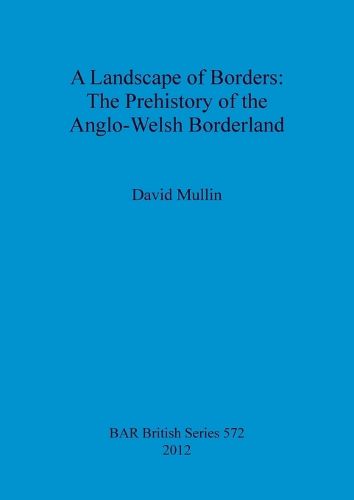Readings Newsletter
Become a Readings Member to make your shopping experience even easier.
Sign in or sign up for free!
You’re not far away from qualifying for FREE standard shipping within Australia
You’ve qualified for FREE standard shipping within Australia
The cart is loading…






This title is printed to order. This book may have been self-published. If so, we cannot guarantee the quality of the content. In the main most books will have gone through the editing process however some may not. We therefore suggest that you be aware of this before ordering this book. If in doubt check either the author or publisher’s details as we are unable to accept any returns unless they are faulty. Please contact us if you have any questions.
This research is concerned with the prehistory of the region which now forms the border between England and Wales. Whilst the Anglo-Welsh border is a relatively modern construct, and has shifted over time, the area is made up of distinctive topography, dividing the lowland Midland Plain from the hill country of central Wales. This also means that there are noticeable changes in both the flora and fauna of the areas to the west and east of the modern boundary. These are discussed in detail in Chapter 1, where the case is made that the region is, in the broadest sense, a natural borderland and a valid unit of study. Chapter 2 sets out to discuss the ways in which people living within landscapes which are both topographically and archaeologically distinct may have thought about their world and their relationship to other people within it. Chapters 3 to 5 explore the networks of production, distribution and consumption. The final chapter considers the issues raised in the earlier chapters, discuss the ways in which the landscape was used and perceived and how this changed over time. The relationships between extraction and deposition; the uses of stone and metal; the wider links between classes of objects; local traditions of production and consumption and the links between the study area and the wider world are all considered. The raw data on which this discussion is based is presented as a series of Appendices.
$9.00 standard shipping within Australia
FREE standard shipping within Australia for orders over $100.00
Express & International shipping calculated at checkout
This title is printed to order. This book may have been self-published. If so, we cannot guarantee the quality of the content. In the main most books will have gone through the editing process however some may not. We therefore suggest that you be aware of this before ordering this book. If in doubt check either the author or publisher’s details as we are unable to accept any returns unless they are faulty. Please contact us if you have any questions.
This research is concerned with the prehistory of the region which now forms the border between England and Wales. Whilst the Anglo-Welsh border is a relatively modern construct, and has shifted over time, the area is made up of distinctive topography, dividing the lowland Midland Plain from the hill country of central Wales. This also means that there are noticeable changes in both the flora and fauna of the areas to the west and east of the modern boundary. These are discussed in detail in Chapter 1, where the case is made that the region is, in the broadest sense, a natural borderland and a valid unit of study. Chapter 2 sets out to discuss the ways in which people living within landscapes which are both topographically and archaeologically distinct may have thought about their world and their relationship to other people within it. Chapters 3 to 5 explore the networks of production, distribution and consumption. The final chapter considers the issues raised in the earlier chapters, discuss the ways in which the landscape was used and perceived and how this changed over time. The relationships between extraction and deposition; the uses of stone and metal; the wider links between classes of objects; local traditions of production and consumption and the links between the study area and the wider world are all considered. The raw data on which this discussion is based is presented as a series of Appendices.